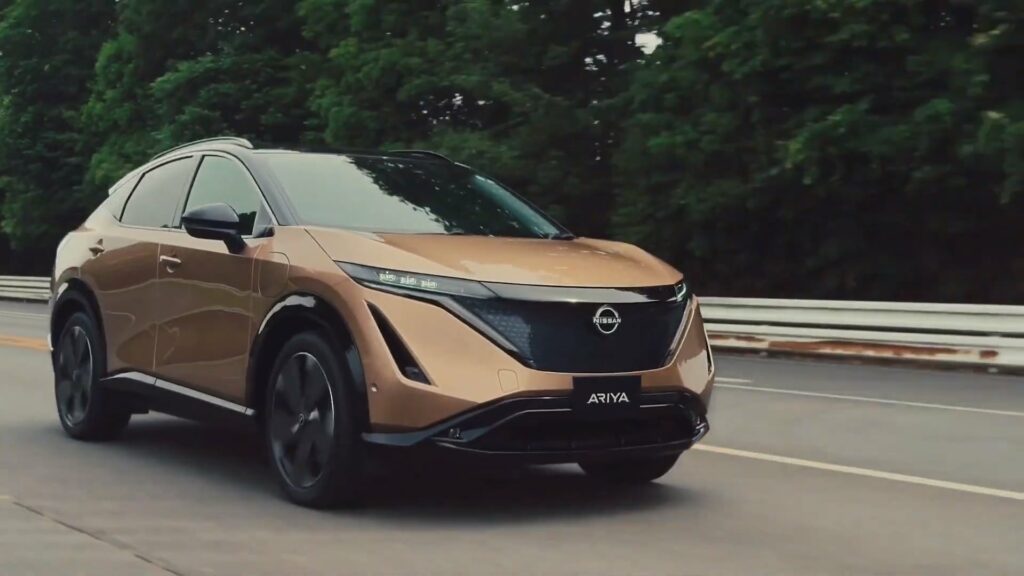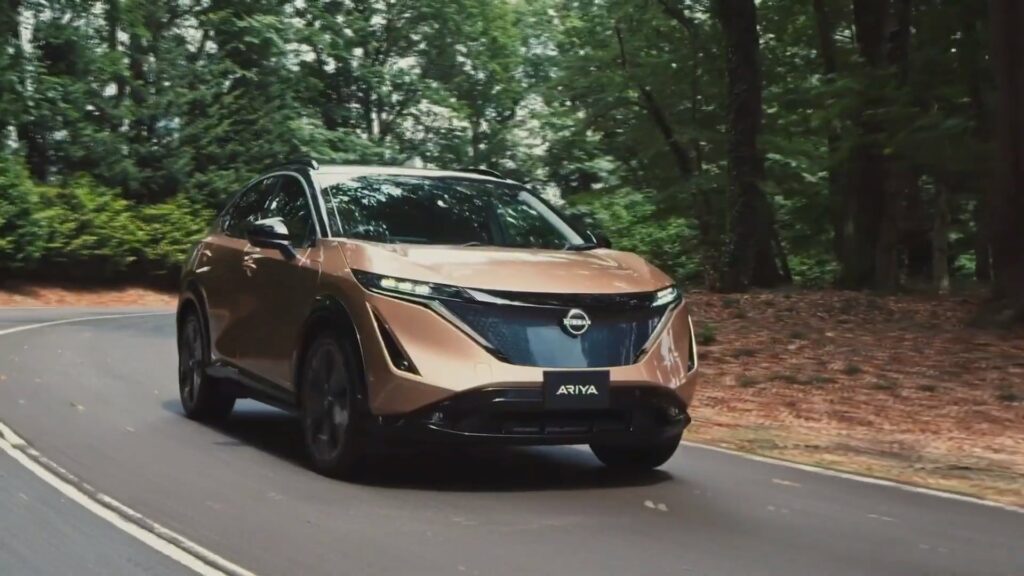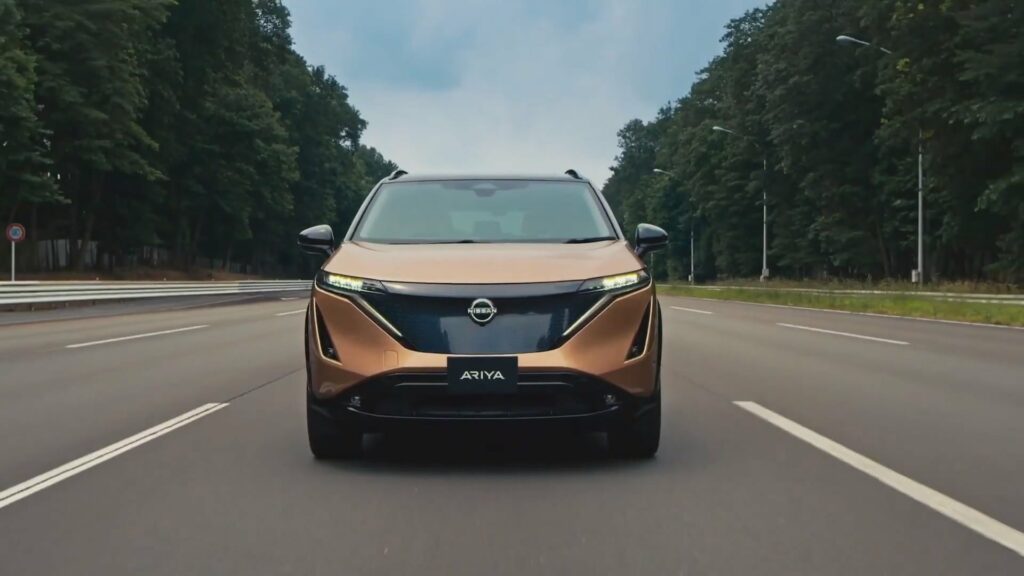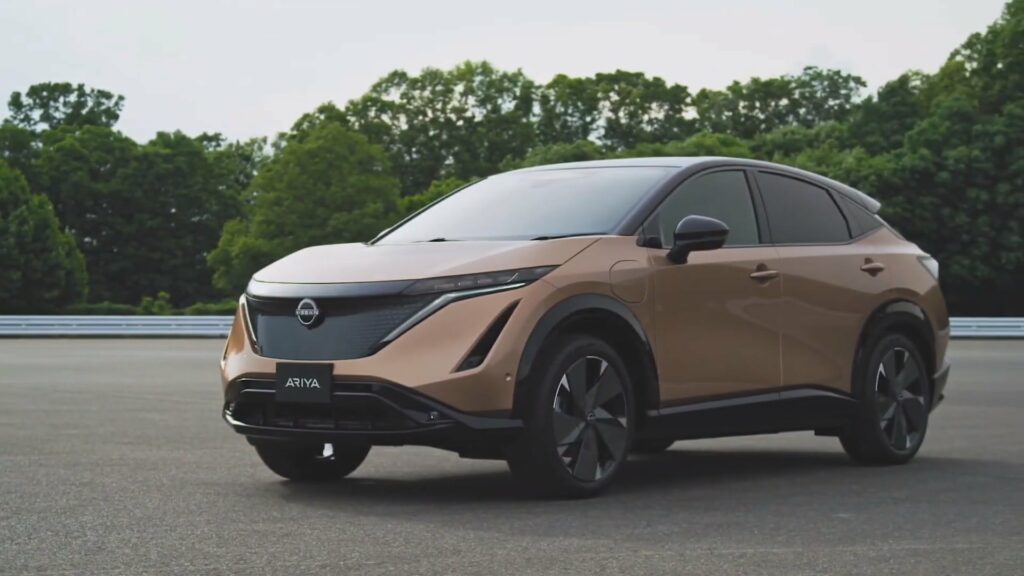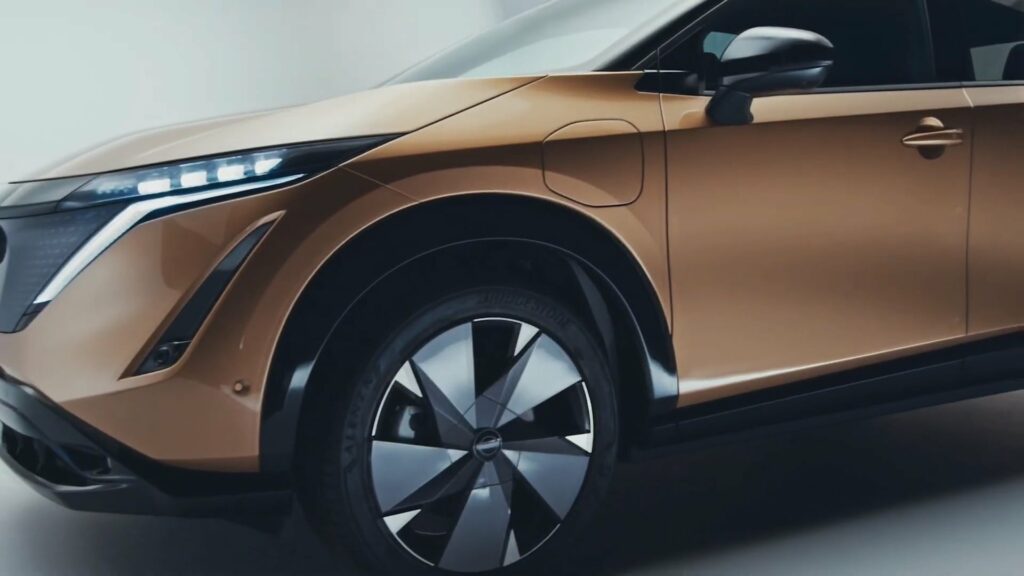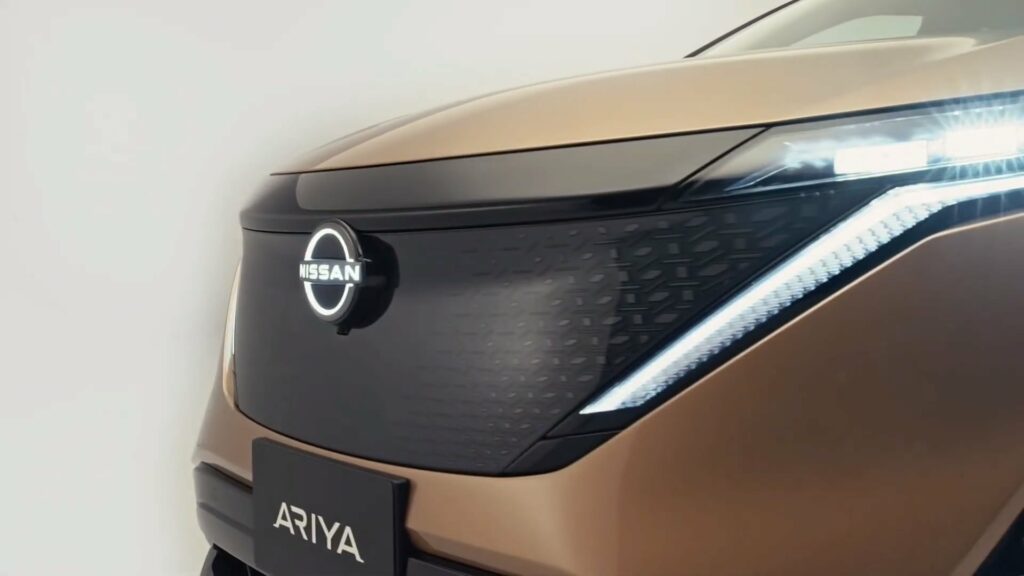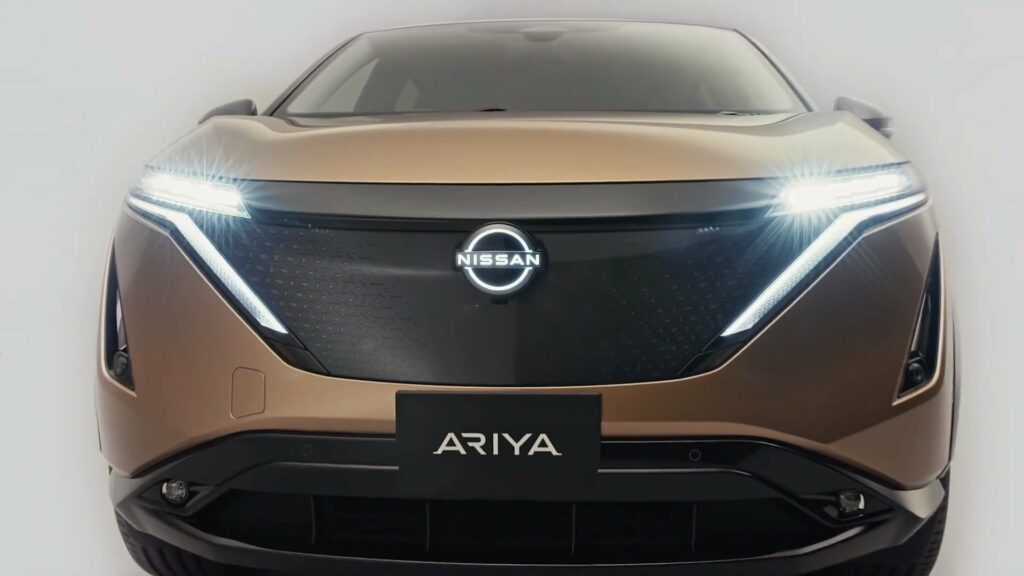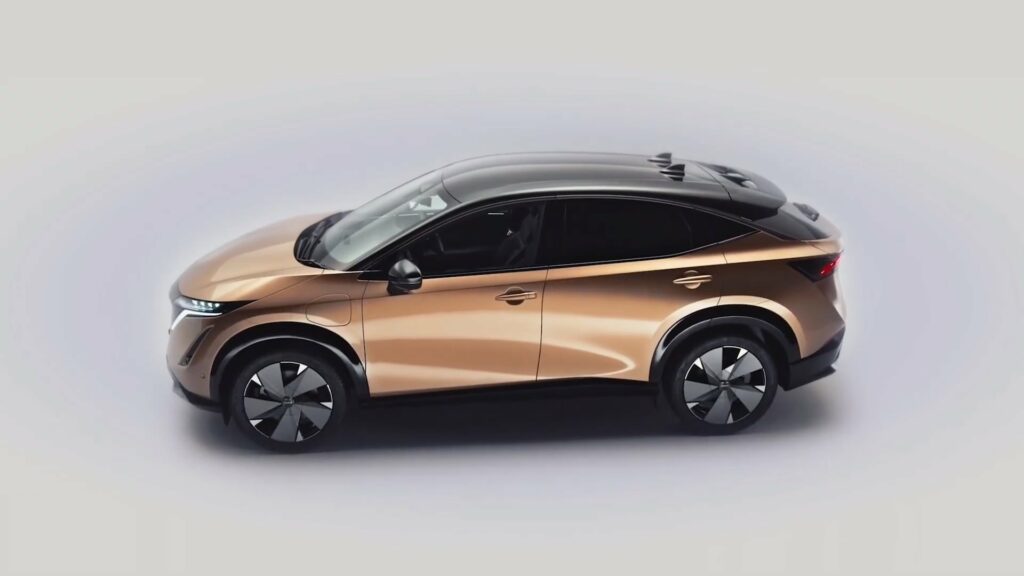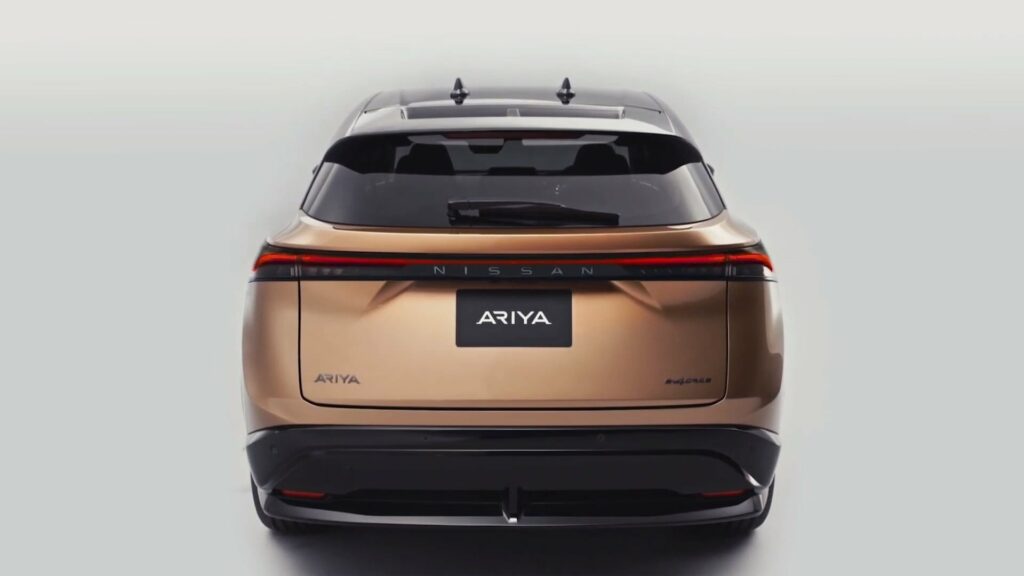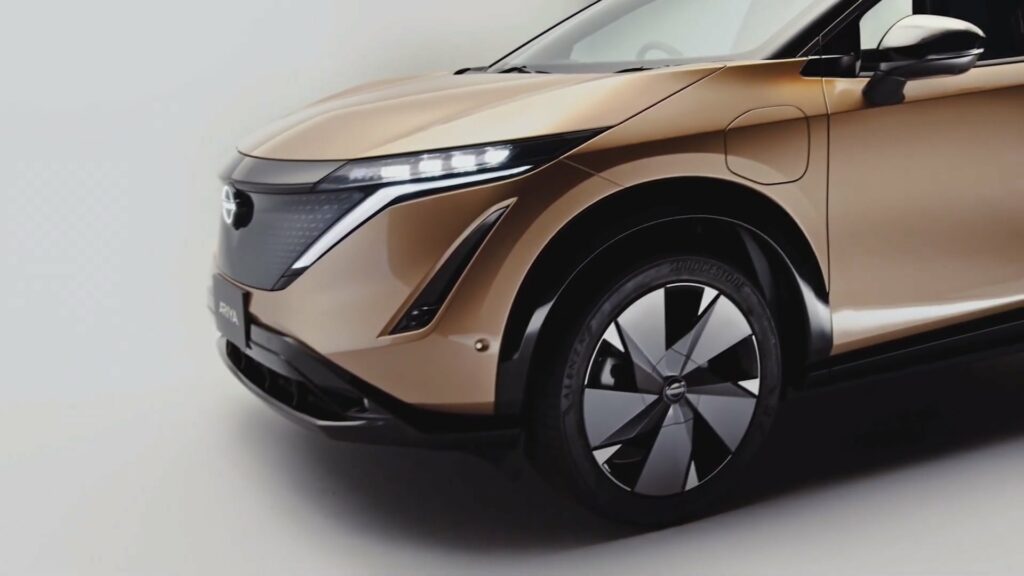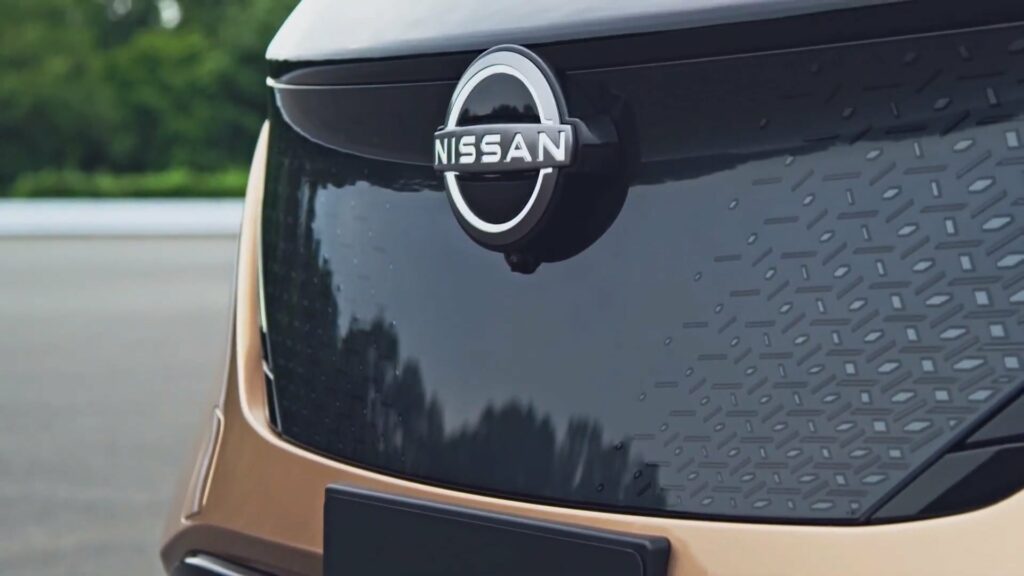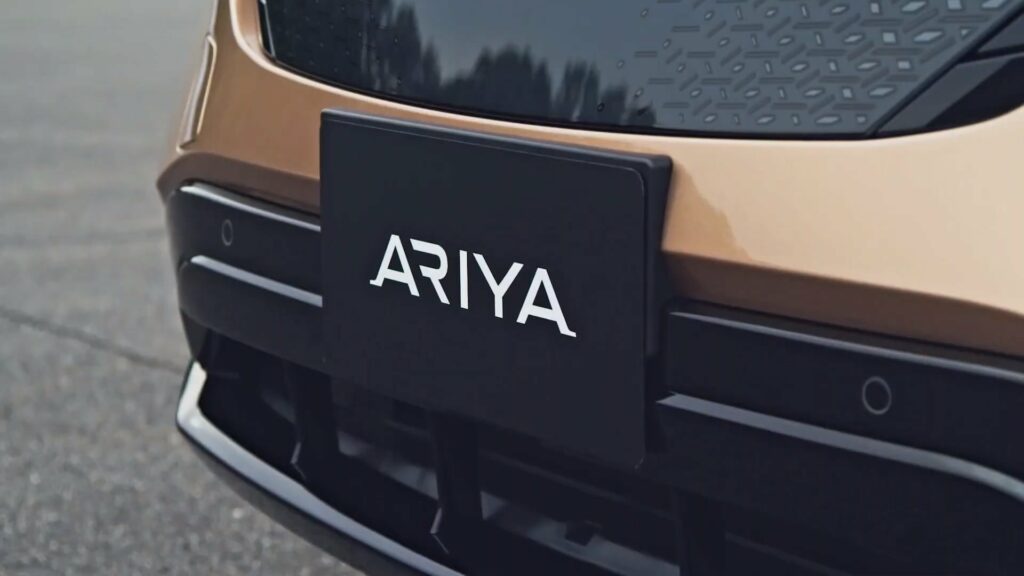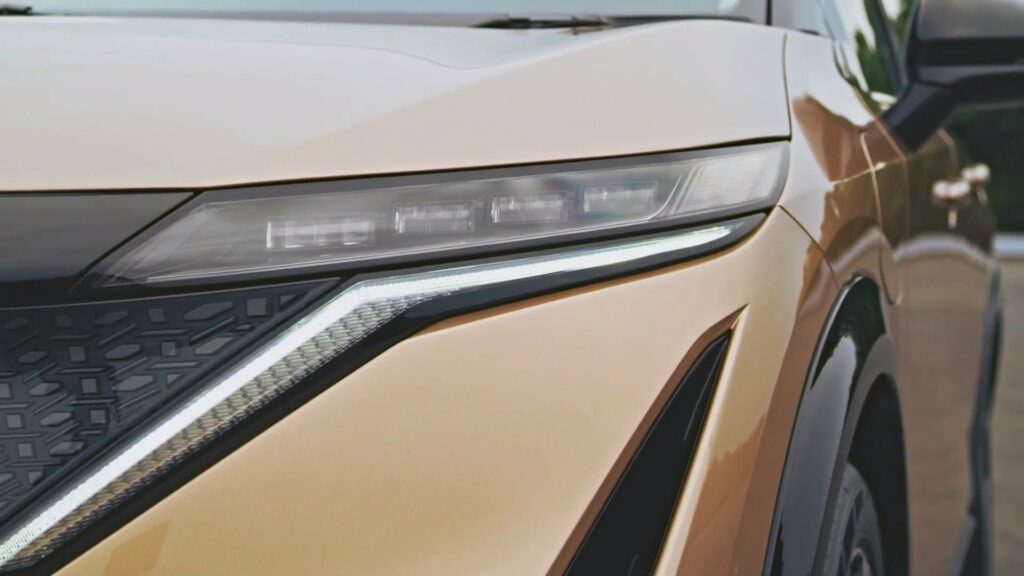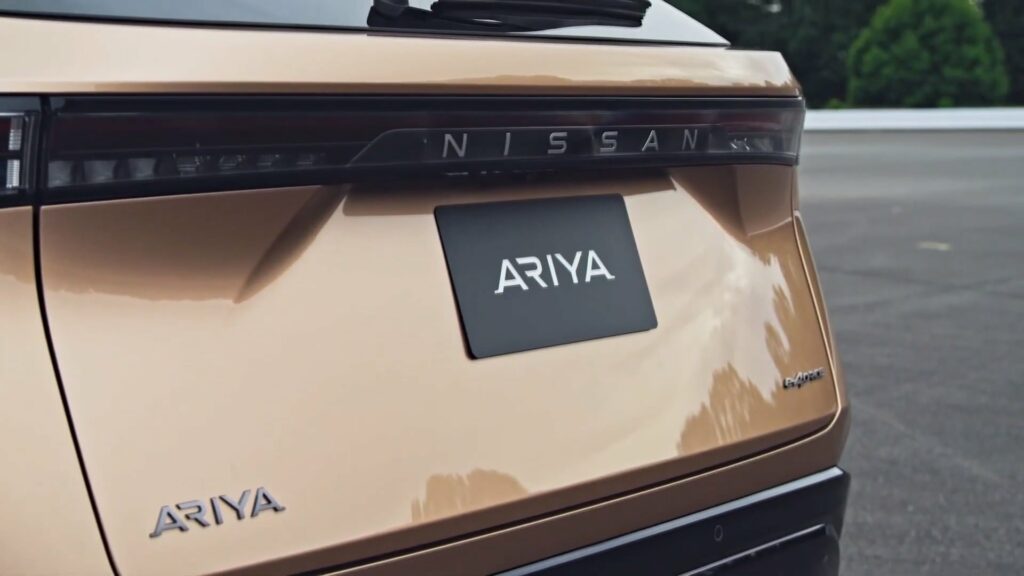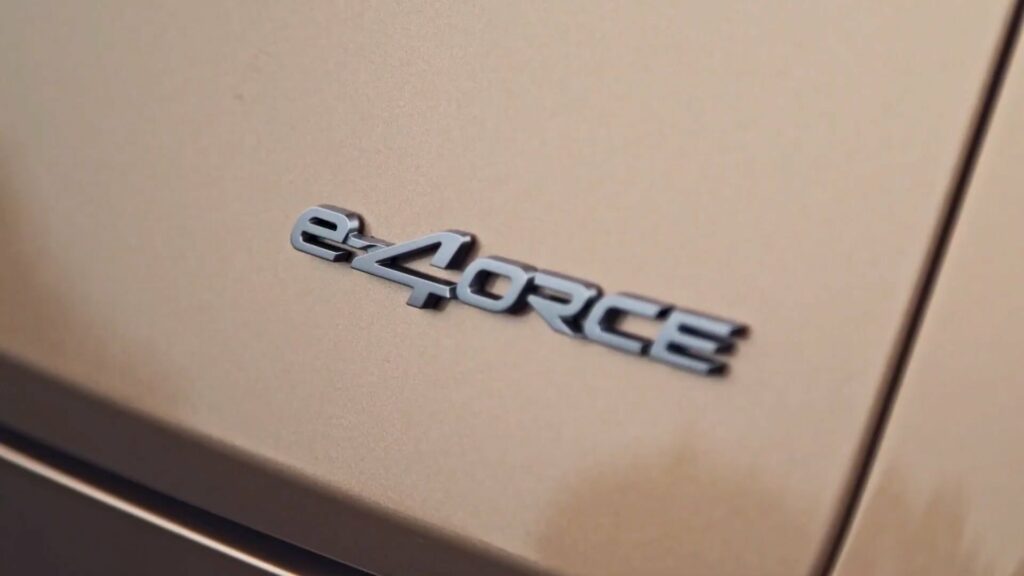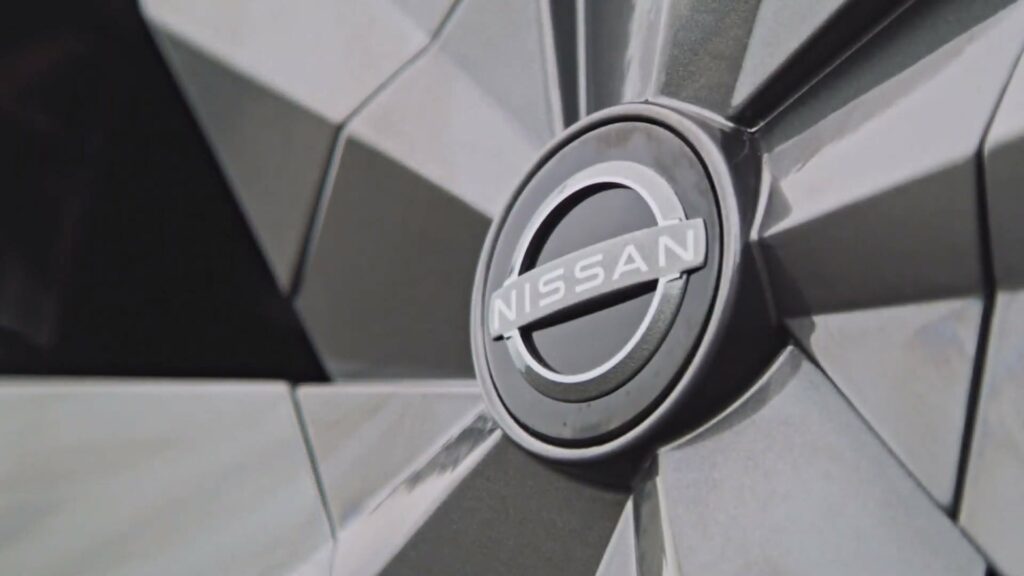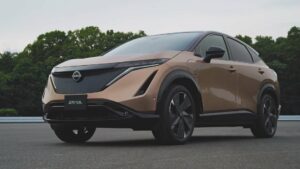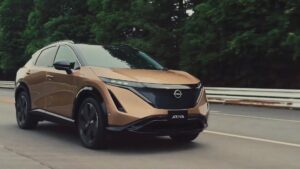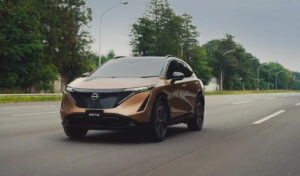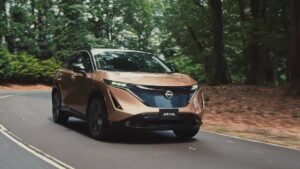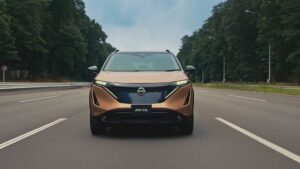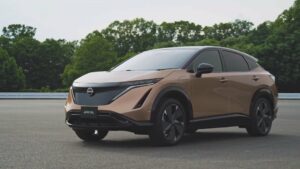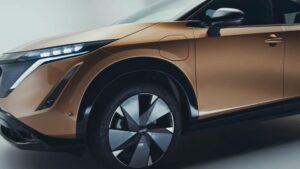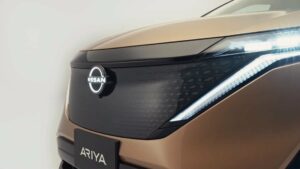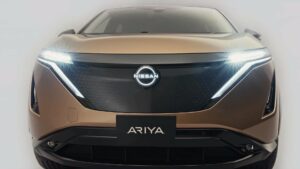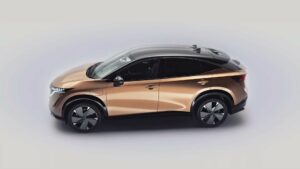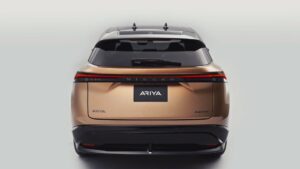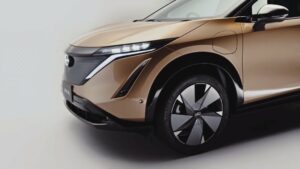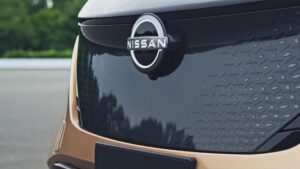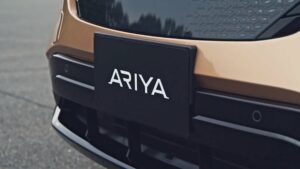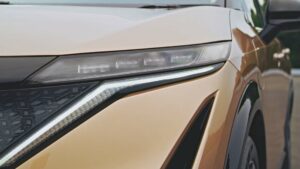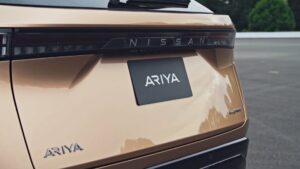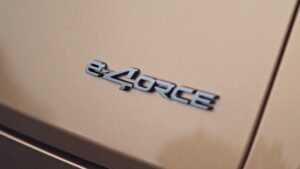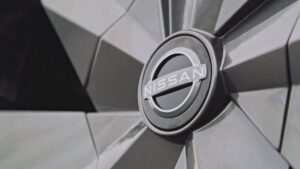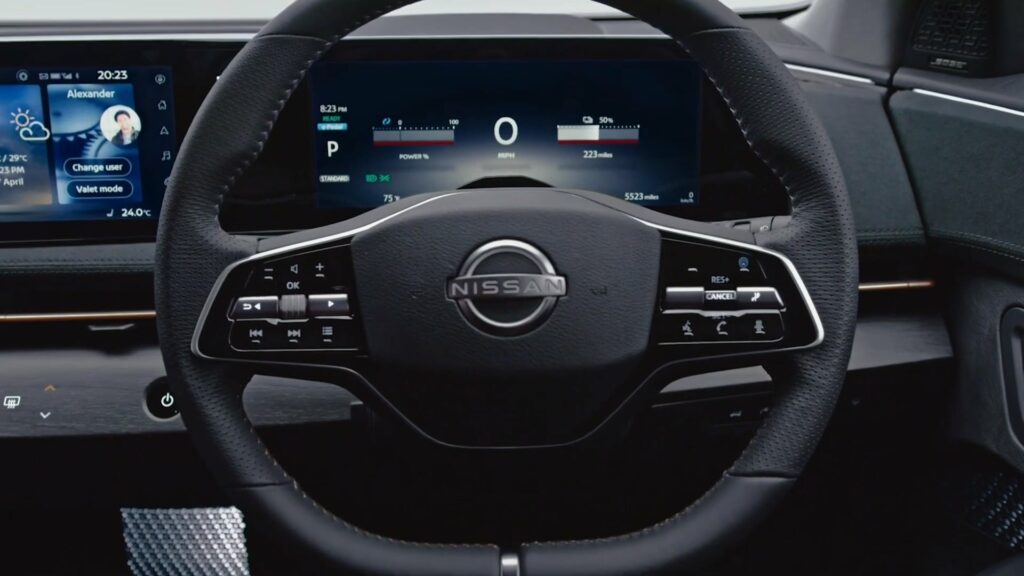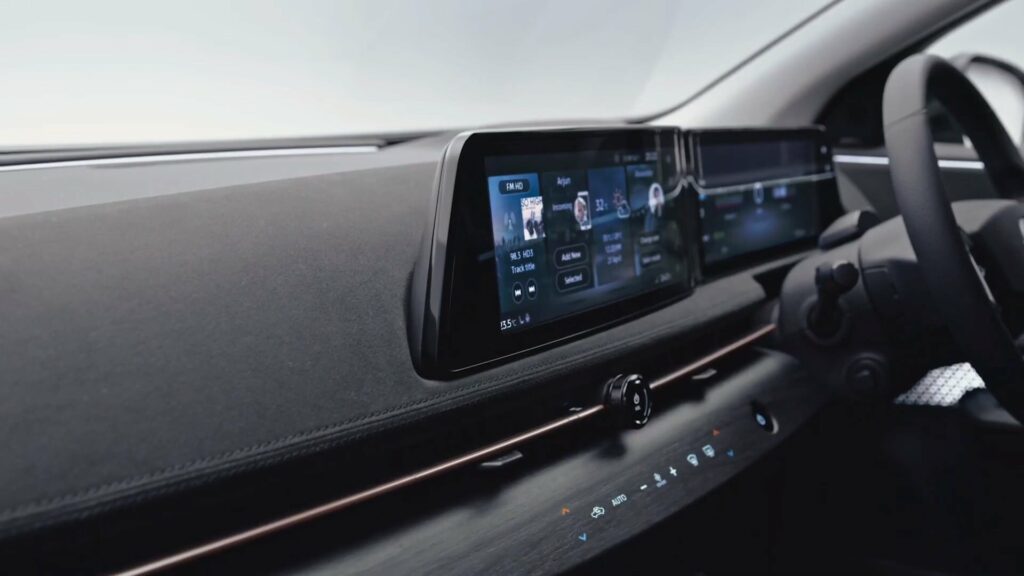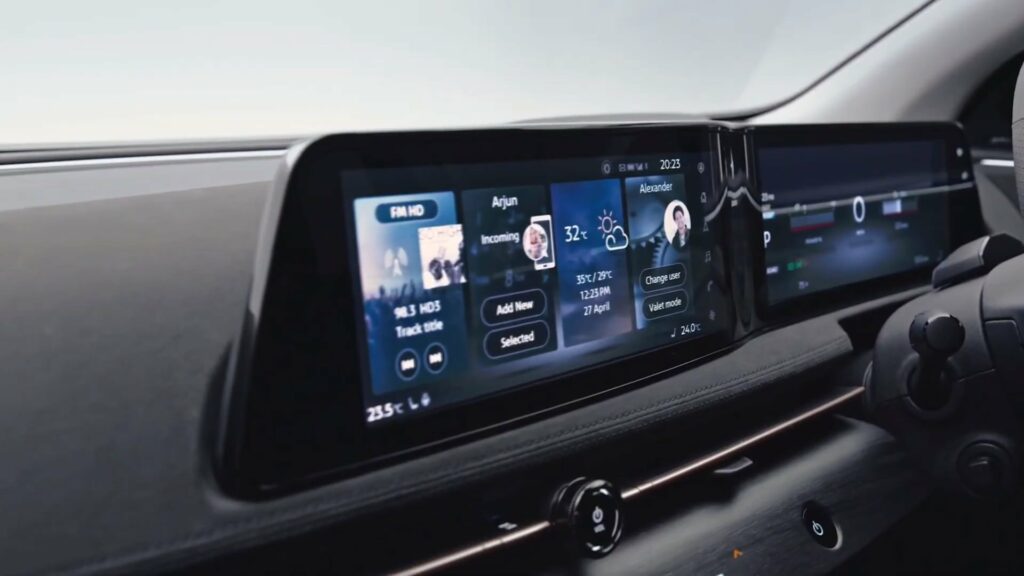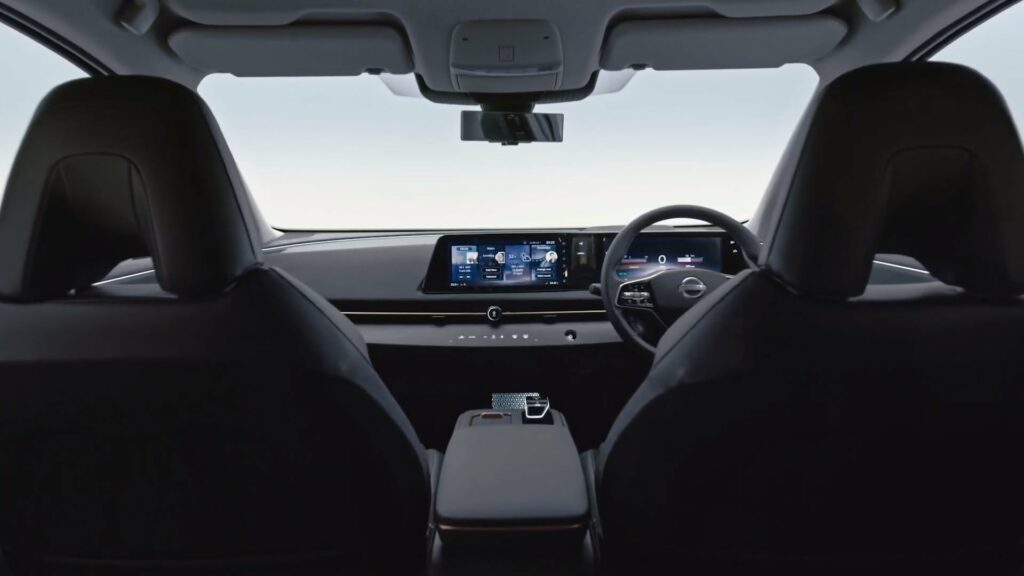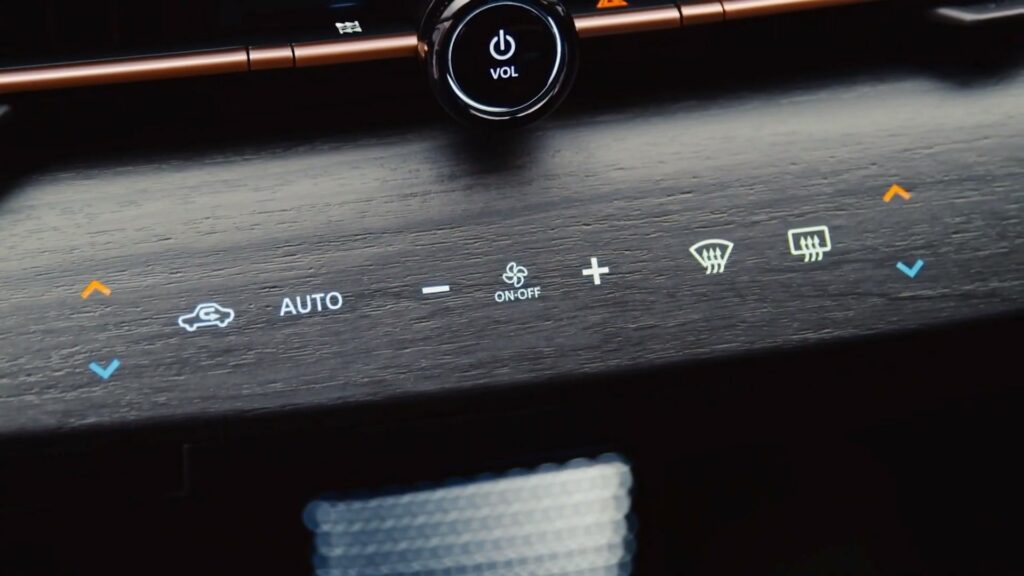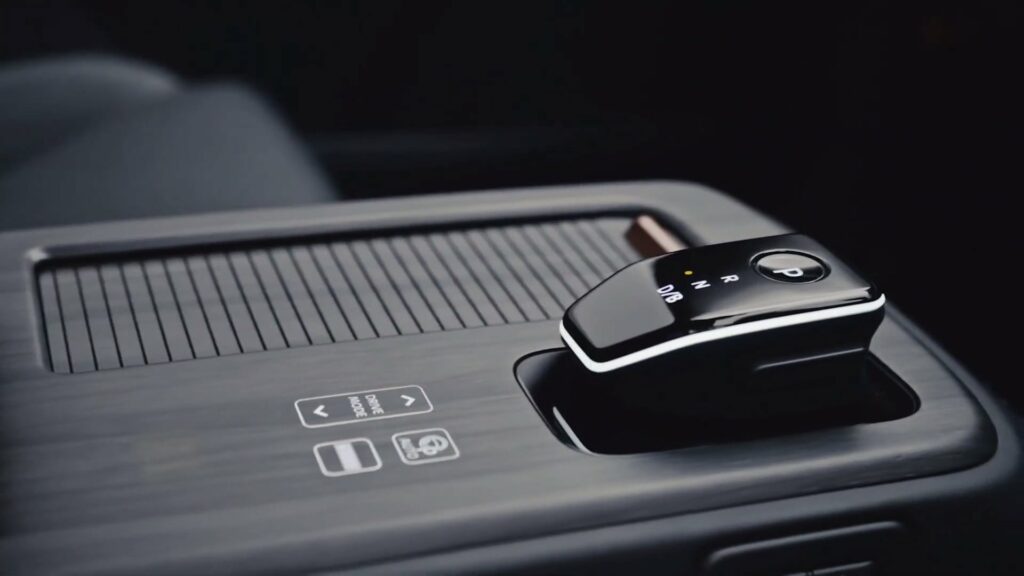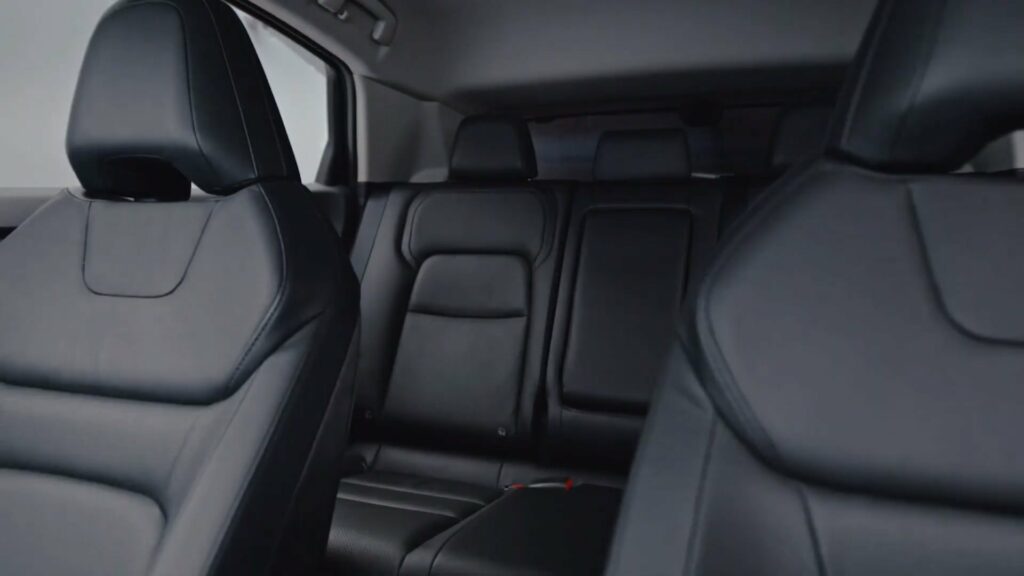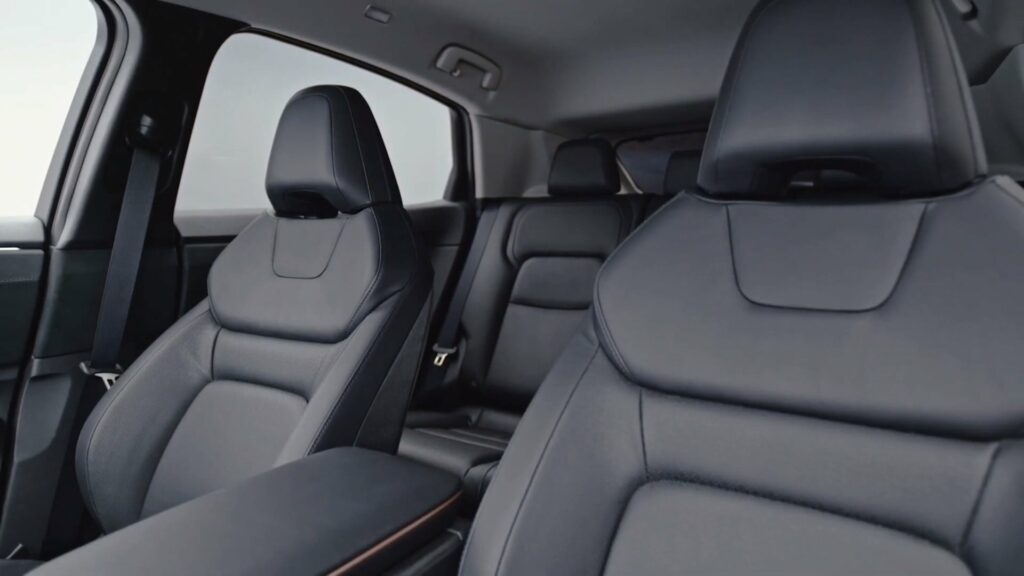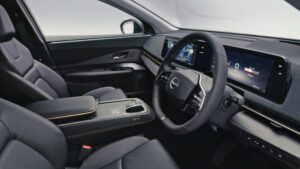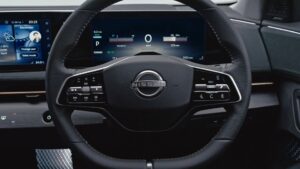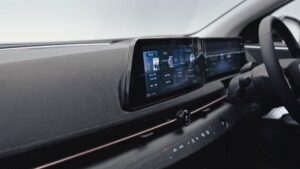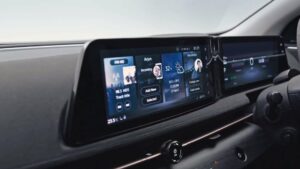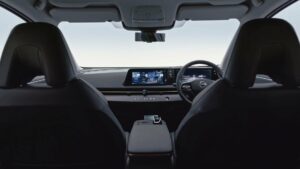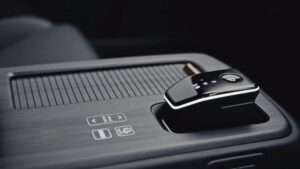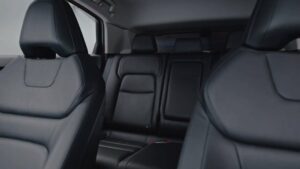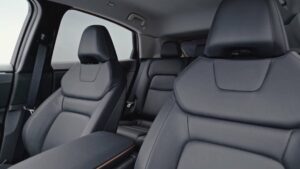Nissan Ariya e-4ORCE 87kWh
Aaria Nissan e-4ORCE 87kWh is an all-electric crossover SUV produced by Japanese automaker Nissan. It is equipped with an 87-kilowatt-hour (kWh) battery that provides a range of up to 420 km on a single charge.
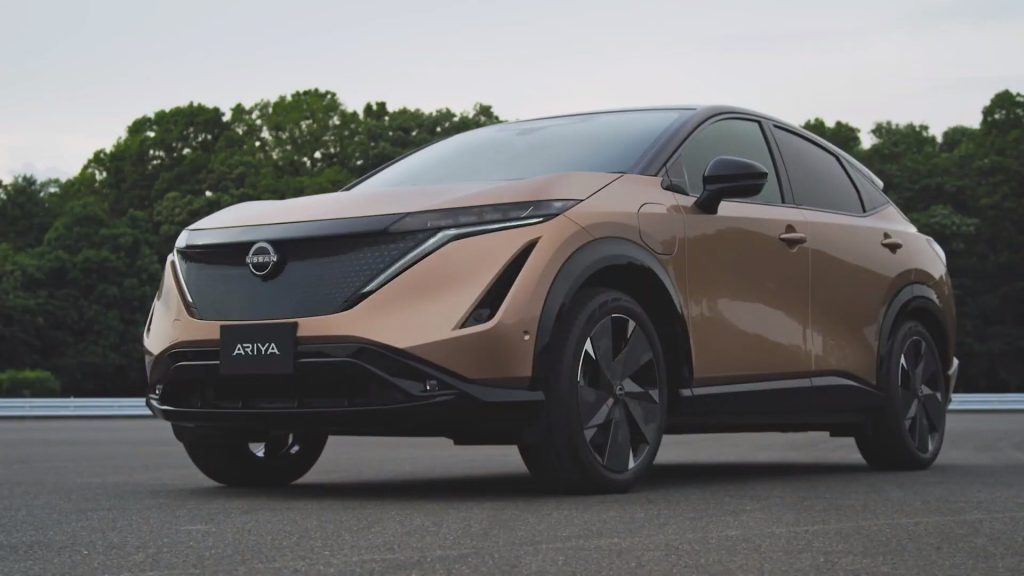
The e-4ORCE prefix in the name indicates an all-wheel-drive system that uses two electric motors to transmit power to all four wheels, providing improved handling and stability. The Ariya’s electric motors deliver a combined output of 225 kW and 600 Nm of torque.
Other features of the Nissan Ariya e-4ORCE include a spacious and modern interior with a large infotainment screen, wireless charging for mobile devices, and advanced driver assistance technology such as ProPILOT 2.0, which can help with acceleration, braking, and highway handling.
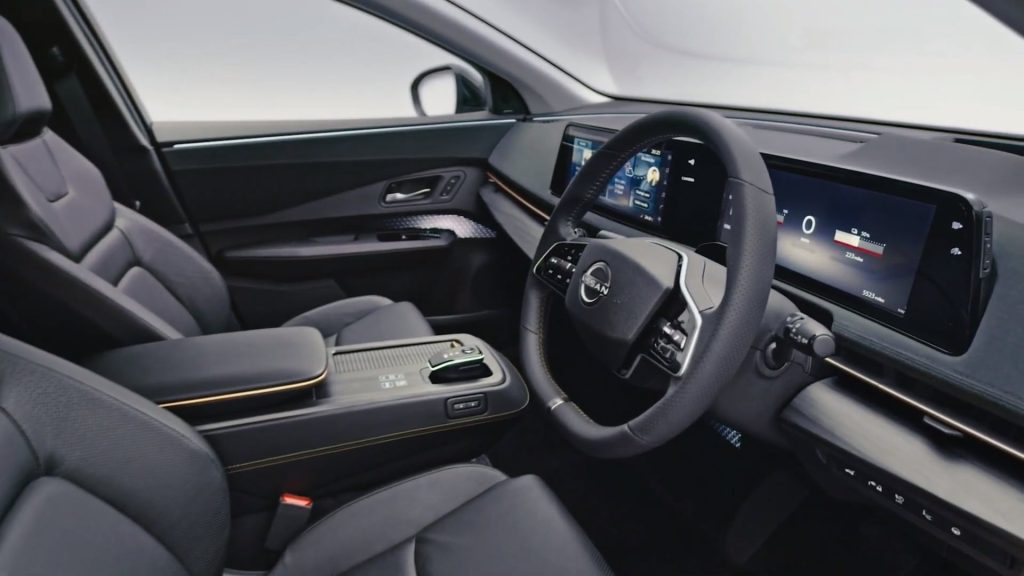
The Ariya also supports fast charging, allowing you to charge up to 80 percent of battery capacity in just 45 minutes using a DC fast charger. The car also comes with a portable charging cable that can be used with a standard 120-volt outlet or a 240-volt home charging station.
Overall, the Nissan Ariya e-4ORCE 87kWh is a high-tech, all-electric SUV with plenty of range, advanced features, and powerful performance.
| Performance | |
| Acceleration 0 – 100 km/h | 5.7 sec |
| Top Speed | 200 km/h |
| Electric Range | 420 km |
| Total Power | 225 kW (306 PS) |
| Total Torque | 600 Nm |
| Drive | AWD |
| Battery and Charging | |
| Battery Capacity | 90.0 kWh |
| Battery Useable | 87.0 kWh |
| Europe | |
| Charge Port | Type 2 |
| Charge Power | 22 kW AC |
| Charge Time (0->420 km) | 4h45m |
| Charge Speed | 90 km/h |
| Fastcharge Port | CCS |
| Fastcharge Power (max) | 130 kW DC |
| Fastcharge Time (42->336 km) | 35 min |
| Fastcharge Speed | 500 km/h |
| Energy Consumption | |
| EVDB Real Range | |
| Range | 420 km |
| Vehicle Consumption | 207 Wh/km |
| CO2 Emissions | 0 g/km |
| Vehicle Fuel Equivalent | 2.3 l/100km |
| WLTP Ratings | |
| Range | 460 km |
| Rated Consumption | No Data |
| Vehicle Consumption | 189 Wh/km |
| CO2 Emissions | 0 g/km |
| Rated Fuel Equivalent | No Data |
| Vehicle Fuel Equivalent | 2.1 l/100km |
|
Rated = official figures as published by manufacturer. Rated consumption and fuel equivalency figures include charging losses.
|
|
|
Vehicle = calculated battery energy consumption used by the vehicle for propulsion and on-board systems.
|
|
| Real Energy Consumption Estimation between 143 – 290 Wh/km | |
| City – Cold Weather * | 205 Wh/km |
| Highway – Cold Weather * | 290 Wh/km |
| Combined – Cold Weather * | 242 Wh/km |
| City – Mild Weather * | 143 Wh/km |
| Highway – Mild Weather * | 229 Wh/km |
| Combined – Mild Weather * | 183 Wh/km |
| Energy use for each trip will vary considerably depending on the driver and the conditions. Therefore, we have provided a range of estimates which can be useful in developing an understanding of the potential benefits of this technology. | |
| Dimensions and Weight | |
| Length | 4595 mm |
| Width | 1850 mm |
| Width with mirrors | No Data |
| Height | 1660 mm |
| Wheelbase | 2775 mm |
| Weight Unladen (EU) | 2300 kg |
| Gross Vehicle Weight (GVWR) | No Data |
| Max. Payload | No Data |
| Cargo Volume | 415 L |
| Cargo Volume Max | No Data |
| Cargo Volume Frunk | No Data |
| Roof Load | No Data |
| Tow Hitch Possible | Yes |
| Towing Weight Unbraked | No Data |
| Towing Weight Braked | 1500 kg |
| Vertical Load Max | No Data |
| Miscellaneous | |
| Seats | 5 people |
| Isofix | No Data |
| Turning Circle | No Data |
| Platform | RNM CMF-EV |
| Car Body | SUV |
| Segment | JC – Medium |
| Roof Rails | No Data |
| EV Dedicated Platform | Yes |
Home and Destination Charging (0 -> 100%)
A public charging station is required to use the highest possible charging rate. The EVSE/charging station’s charging capacity affects how long it takes to fully charge the battery. The table below shows all possible options for fully charging the Nissan Ariya e-4ORCE 87kWh.
In Europe, plugging an electric car into an outlet is often as easy as plugging it into a household outlet, but there are differences from country to country. The table below shows the different ways to charge the Nissan Ariya e-4ORCE 87kWh, but in some countries some chargers may not be available.
Type 2 ( IEC 62196)

| Charging Point | Max. Power | Power | Time | Rate |
| Wall Plug (2.3 kW) | 230V / 1x10A | 2.3 kW | 44h30m | 9 km/h |
| 1-phase 16A (3.7 kW) | 230V / 1x16A | 3.7 kW | 27h45m | 15 km/h |
| 1-phase 32A (7.4 kW) | 230V / 1x32A | 7.4 kW | 14 hours | 30 km/h |
| 3-phase 16A (11 kW) | 400V / 3x16A | 11 kW | 9h30m | 44 km/h |
| 3-phase 32A (22 kW) | 400V / 3x32A | 22 kW | 4h45m | 88 km/h |
Fast Charging (10 -> 80%)
If you want to enjoy driving an electric car, one of the most important features to consider is the number of miles per hour the car can travel while charged. This is called the “range” of the car. All electric cars have a certain range, even if they are 100% charged. This is because they do not have an internal combustion engine to lean on if you need to drive a long distance.
Max. Power: The maximum power provided by the charging point
Avg. Power: The average power provided by the charging point during a session of 10% to 80%.
Time: the time it takes to charge from 10% to 80%
Speed: the average charging rate during the session of 10% to 80%
Combined Charging System (CCS Combo 2)
| Charging Point | Max. Power | Avg. Power | Time | Rate |
| CCS (50 kW DC) | 50 kW | 45 kW | 85 min | 200 km/h |
| CCS (100 kW DC) | 100 kW | 85 kW | 45 min | 390 km/h |
| CCS (150 kW DC) | 130 kW | 110 kW | 35 min | 500 km/h |
| Brand | Nissan |
| Model | Ariya e-4ORCE 87kWh |
| Body Style | SUV |
| Car Engine | electric |
| Motor power | 225 |
| Maximum Torque, Nm | 600 |
| Battery Energy, kWh | 90.0 |
| Power reserve (NEDC/EPA/WLTP), km | - / - / 420 |
| Level Charging (230/400/DC), hours | - / 4.45 / 0.35 |
| Electrical Acceleration, 0-100 km/h (0-62.1 mph) in sec | 5.7 |
| Top Speed, km/h | 200 |

